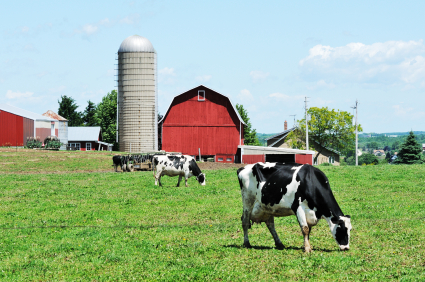
How Dairy Farms Contribute to Greenhouse Gas Emissions
U.S. Department of Agriculture scientists have produced the first detailed data on how large-scale dairy facilities contribute to the emission of greenhouse gases. This research was conducted by Agricultural Research Service scientists at the ARS Northwest Irrigation and Soils Research Laboratory in Kimberly, Idaho.

ARS is USDA's principal intramural scientific research agency, and these studies support the USDA priority of responding to climate change.
ARS soil scientist April Leytem led the year-long project, which involved monitoring the emissions of ammonia, carbon dioxide, methane and nitrous oxide from a commercial dairy with 10,000 milk cows in southern Idaho. The facility had 20 open-lot pens, two milking parlors, a hospital barn, a maternity barn, a manure solid separator, a 25-acre wastewater storage pond and a 25-acre compost yard.
Concentration data was collected continuously for two to three days each month, along with air temperature, barometric pressure, wind direction and wind speed. After this data was collected, Leytem's team calculated the average daily emissions for each source area for each month.
The results indicated that, on average, the facility generated 3,575 pounds of ammonia, 33,092 pounds of methane and 409 pounds of nitrous oxide every day. The open lot areas generated 78 percent of the facility's ammonia, 57 percent of its nitrous oxide and 74 percent of the facility's methane emissions during the spring.
In general, the emission of ammonia and nitrous oxide from the open lots were lower during the late evening and early morning, and then increased throughout the day to peak late in the day.
These daily fluctuations paralleled patterns in wind speed, air temperature and livestock activity, all of which generally increased during the day. Emissions of ammonia and methane from the wastewater pond and the compost were also lower in the late evening and early morning and increased during the day.